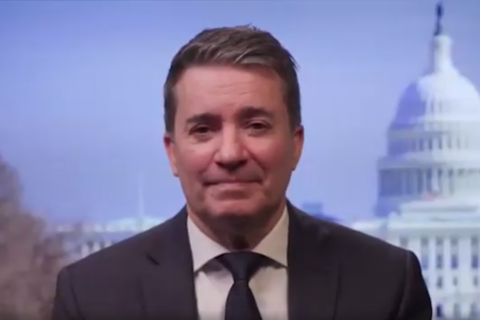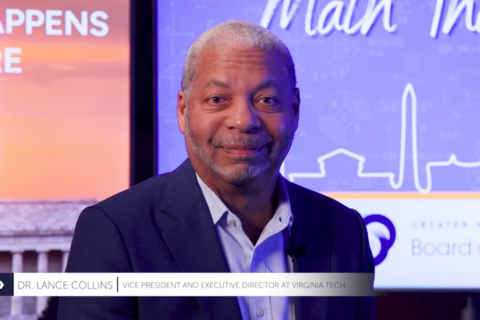This content is sponsored by the Greater Washington Partnership.
As the seventh largest regional economy in the world, the capital region of Baltimore, Washington and Richmond region is a powerhouse with tremendous potential. Transportation is paramount to the region’s success, and we must work together to ensure our transit and roadway systems meet our needs.
The Greater Washington Partnership, an alliance of the region’s leading CEOs and C-suite leaders from Baltimore to Richmond, is committed to making Baltimore through Richmond the most connected and accessible region in the country.
The organization recently released the Blueprint for Regional Mobility 5-year Refresh, updating its recommendations for improving regional mobility.
“It lays out an agenda to transform our transportation system into an asset that boosts our global competitiveness,” said Bob Blue, CEO of Dominion Energy and co-chair of the Partnership’s regional mobility and infrastructure initiative.
Although the capital region’s metro areas have a variety of transportation options, they often suffer from poor underperforming infrastructure and disjointed operations.
In 2018, the Greater Washington Partnership— which features more than 35 organizations, representing nearly 3,000 workers— developed the Capital Region Blueprint for Regional Mobility to advance the region’s transportation system.
The Blueprint was the region’s first employer-led, comprehensive, region-wide transportation agenda aimed at enhancing mobility across jurisdictional borders and integrating all transportation modes.
Since the COVID-19 pandemic led to changed behaviors of both businesses and commuters, the Refresh intends to help the region continue its path toward a connected, consumer-oriented and innovative mobility system.
Securing steady funding for the metro system, modernizing the region’s gateway rail stations like Union Station, and advancing transit-oriented development to expand connectivity to opportunity, are just some of the priorities highlighted in the refresh.
“We’re championing bridges, bus lanes, even bike lanes to give people options to get to work or school by thinking bolder and dreaming bigger about what it means to get around,” said Ken Samet, CEO of MedStar Health and co-chair of the Partnership’s regional mobility and infrastructure initiative.
In years to come, the region is expected to see a significant growth in population, and with that growth there will be a need to improve our transportation systems. Our infrastructure has helped drive the region’s economic success and provides mobility options that connect residents to work, essential destinations, and cultural assets. However, without continuous and strategic improvement and maintenance of that system, our growing population will only increase pressure on an already taxed system.
“At the Greater Washington Partnership, we recognize that robust transportation options translate to economic mobility for all residents,” Samet said. “We can expand access to opportunity for our region’s 10 million residents, and create communities where people truly want to live, work, stay and grow a business.”







